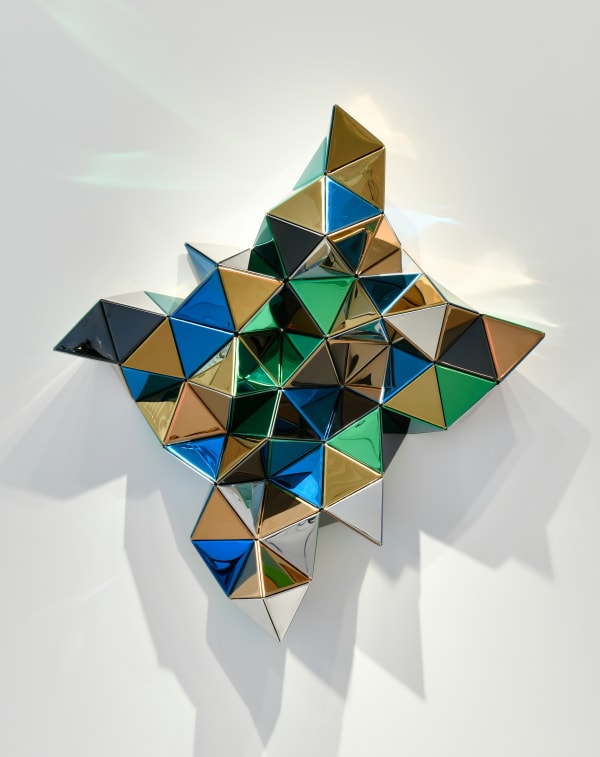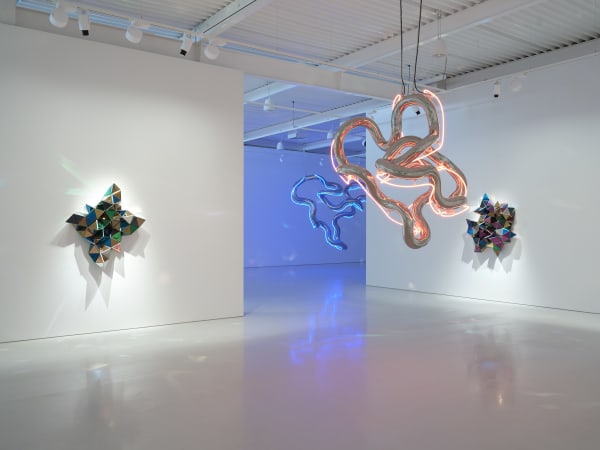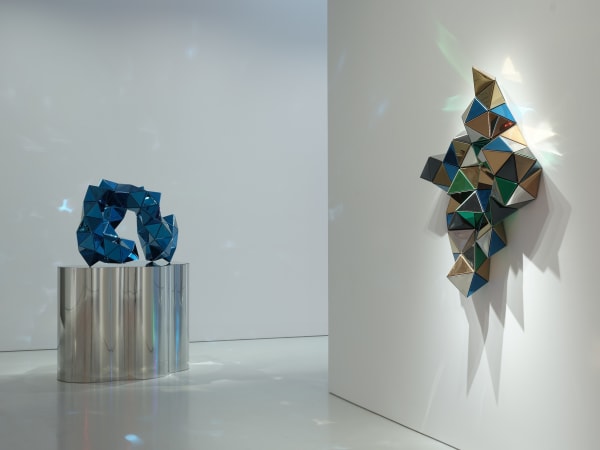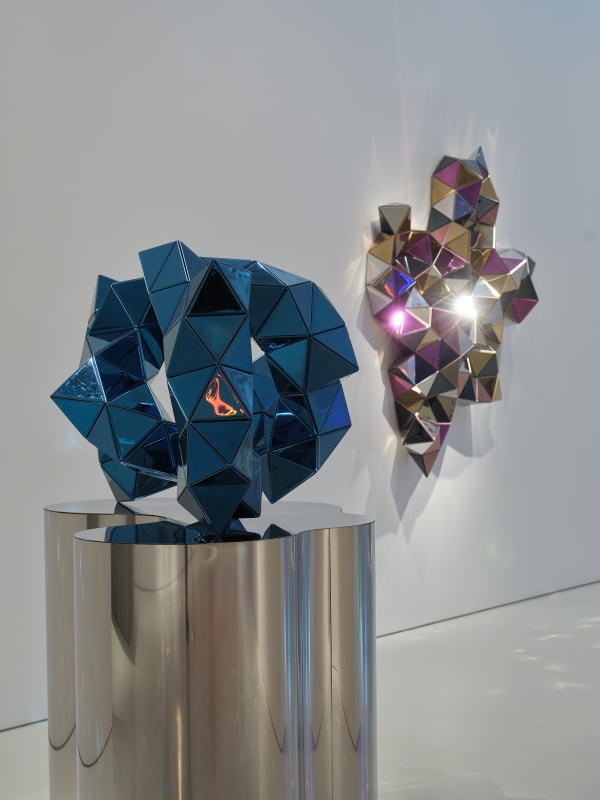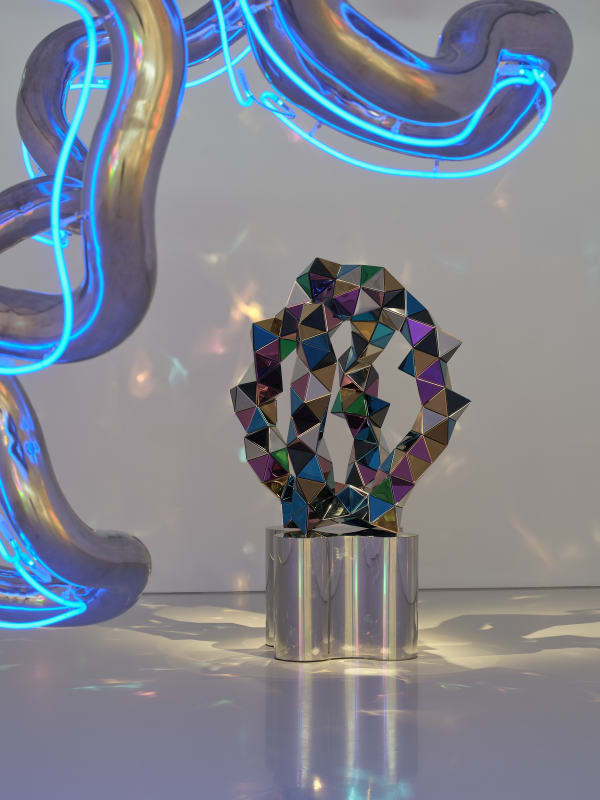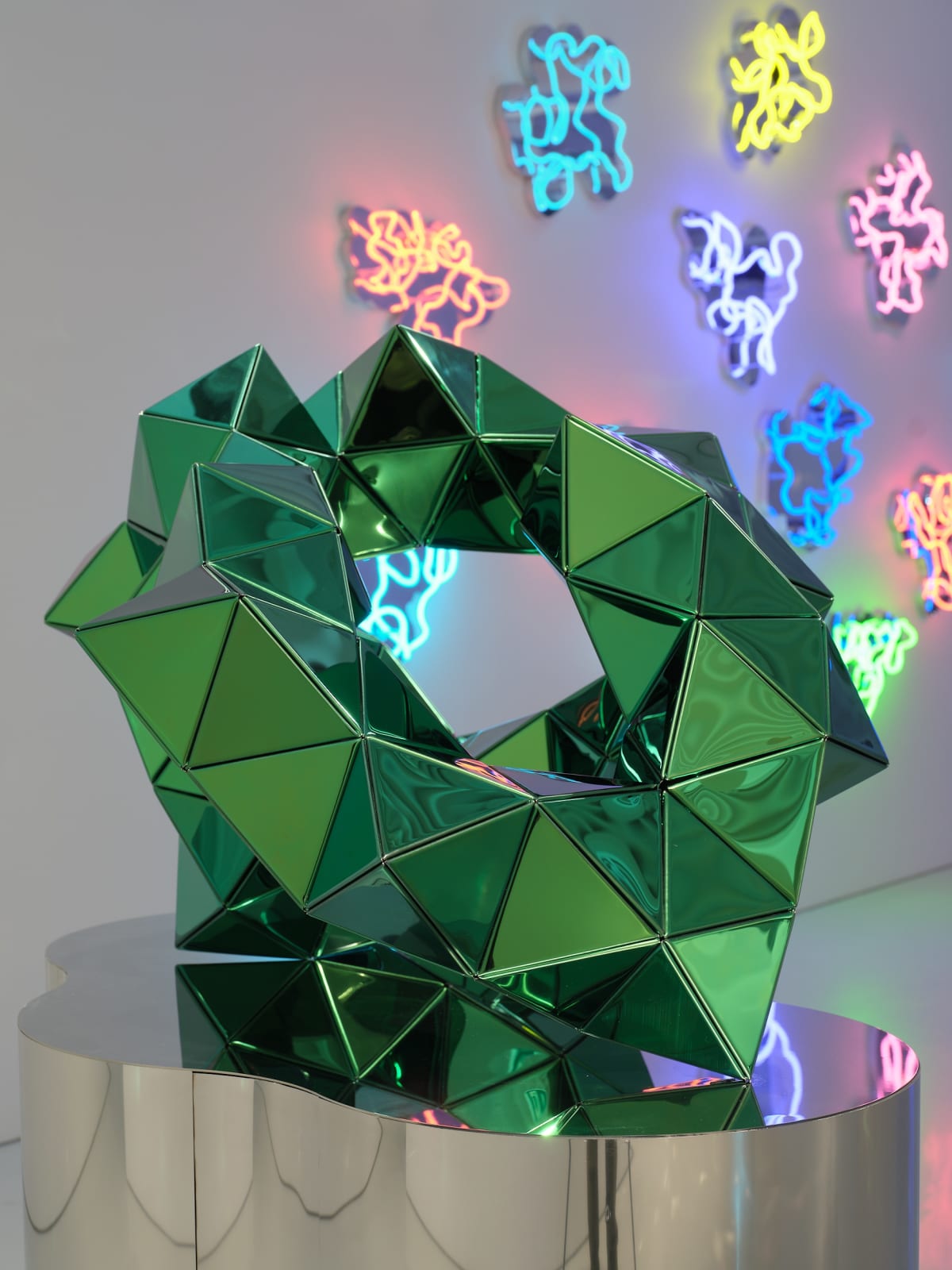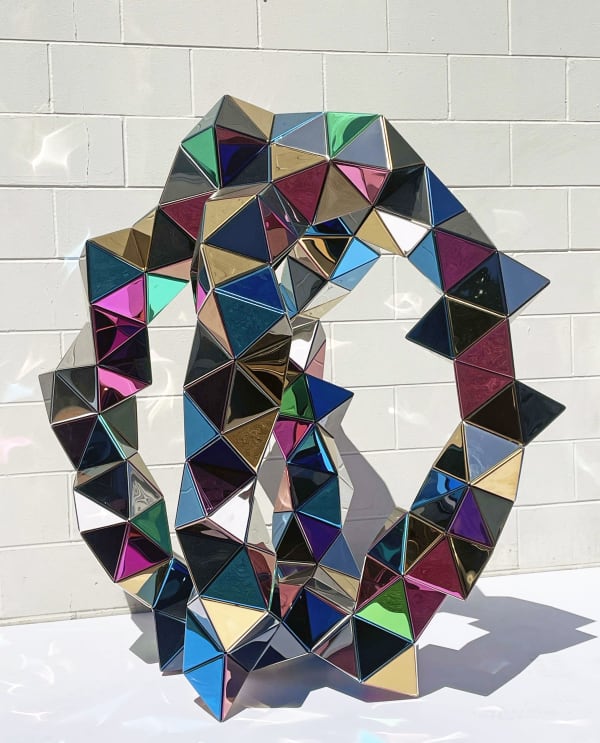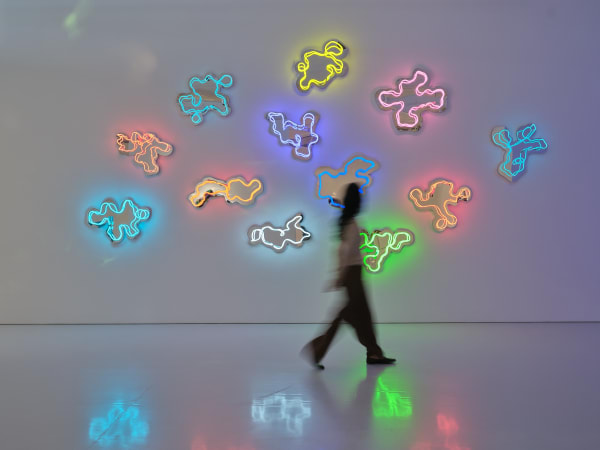Reflective Paradigm: Gregor Kregar
Gregor Kregar’s Reflective Paradigm explores the shifting nature of perception, identity, and connection. Composed of mirrored surfaces, fractured geometries, and vibrant materials, his sculptures distort and multiply reflections, embodying the tensions of a world in flux. Kregar’s work invites viewers to navigate uncertainty - where individuality and collectivity coexist, and where meaning is never fixed but constantly reconfigured. In this interplay of form and perspective, Reflective Paradigm asks us to see beyond the surface and reconsider what still binds us together.
Read the accompanying essay Tell me who you are by Dina Jezdic below.
-
 Gregor Kregar, Fractured Geometry, Rose Bronze, 2025
Gregor Kregar, Fractured Geometry, Rose Bronze, 2025 -
 Gregor Kregar, Fractured Geometry, Blue, 2025
Gregor Kregar, Fractured Geometry, Blue, 2025 -
 Gregor Kregar, Iridescent Cloud 4, 2025
Gregor Kregar, Iridescent Cloud 4, 2025 -
 Gregor Kregar, Fractured Geometry, Green, 2025
Gregor Kregar, Fractured Geometry, Green, 2025 -
 Gregor Kregar, Iridescent Cloud 3, 2025
Gregor Kregar, Iridescent Cloud 3, 2025 -
 Gregor Kregar, Iridescent Cloud 2, 2025
Gregor Kregar, Iridescent Cloud 2, 2025 -
 Gregor Kregar, Fractured Geometry, Iridescent, 2025
Gregor Kregar, Fractured Geometry, Iridescent, 2025 -
 Gregor Kregar, Iridescent Cloud 1, 2025
Gregor Kregar, Iridescent Cloud 1, 2025 -
 Gregor Kregar, Neon Cloud 1, Turquoise, 2025
Gregor Kregar, Neon Cloud 1, Turquoise, 2025 -
 Gregor Kregar, Iridescent Cloud 5, 2025
Gregor Kregar, Iridescent Cloud 5, 2025 -
 Gregor Kregar, Neon Cloud 5, Pink, 2025
Gregor Kregar, Neon Cloud 5, Pink, 2025
Tell me who you are
Essay by Dina Jezdić
O, gather up the brokenness
Bring it to me now
The fragrance of those promises
You never dared to vowO, troubledness concealing
An undivided love
The heart beneath is teaching
To the broken heart above
Leonard Cohen - Come Healing 2012
There is something disorienting about encountering your reflection in an unexpected place—a fleeting, distorted version of yourself in a mirror, a pane of glass, or the polished surface of a sculpture. The image is yours, but unfamiliar, bent by forces beyond your control. As someone who, like Gregor Kregar, comes from the former Yugoslavia and as a decolonial scholar, I share a sense of confusion. I often wonder how the long fight for justice—seeking fairness over merit-based systems, and real change instead of just symbolic gestures—has led us to a world that feels both more noticeable and more divided than ever. Kregar’s sculptures, with their kaleidoscopic reflections and fractured geometries, seem to embody this tension. Crafted from polished metals, vibrant stainless steel, and neon lights, this new body of work refracts, multiplies, and unsettles perception, making it impossible to see oneself in a single, stable form.
This instability is more than an aesthetic choice—it reflects a deeper unease. Identity, once a rallying force for unity amongst the most marginalised, has become a shifting terrain where recognition can outpace transformation, and solidarity is no longer assumed but continually renegotiated. Emerging from urgent struggles against racism, sexism, coloniality, and ableism, identity politics provided a vital framework for understanding power. But where these movements once sought to dismantle structures of inequality, they now risk becoming caught in cycles of self-definition—splintering into ever-smaller units, each asserting its claim to visibility, yet often struggling to find common ground. Kregar’s sculptures seem to hold this paradox. Each triangle is distinct, yet inseparable from the whole—a tension between autonomy and interdependence. They resist certainty, shimmering and shifting, demanding that we see from multiple angles. In their reflections, they hold a question: can we acknowledge both the necessity and the limits of identity as a framework for change? Not by erasing difference or retreating into neutrality, but by finding new ways of seeing—ways that allow for complexity, contradiction, and, perhaps, repair. If identity has become a mirror, endlessly refracting, the challenge remains: can we look beyond the surface and find what still connects us?
American writer and activist James Baldwin said, “Not everything that is faced can be changed, but nothing can be changed until it is faced.” We live in a moment where conversations about identity and justice are both amplified and contested, where the language of progress is often repurposed to maintain the status quo. The belief that success is purely a result of individual effort is often used to dismiss the need for equity, while “woke” has become both a slogan and a slur, diverting attention from deeper questions of justice. The real work of dismantling oppression is too often overshadowed by symbolic gestures, and as neoliberalism continues to erode collective structures, solidarity gives way to individual competition.
Kregar’s latest work surfaces the labour erased from view, its restless geometry revealing what has been overlooked. Interlocking forms, reminiscent of molecular structures, push beyond their intended logic—twisting into cloud-like configurations that shift and evolve, embodying complexity and multiplicity. His sculptures hold both the power of the collective and the fragmentation of identity politics, refusing to settle, bending and breaking in patterns that mirror the world’s instability. Like the individual triangles composing his structures, movements once united for change have fractured, each piece seeking recognition in a digital landscape that amplifies difference while struggling to foster solidarity. In an era of hyper-visible identity, collective power has never felt more precarious. Justice and representation saturate discourse, yet they too often serve as symbols rather than catalysts—activism is commodified, identity weaponised, and the rhetoric of meritocracy only tightens the grip of existing hierarchies. Yet his work resists this fragmentation, not by imposing a fixed perspective or singular truth, but by offering an invitation—to see beyond our silos, to recognise the cracks without surrendering to them, and to consider, perhaps, what still binds us together.
Kregar’s sculptures shimmer and slip between forms, evoking an endless cycle of shedding and renewal—the perpetual motion of history as it builds, fractures, and rebuilds. Their reflective surfaces distort and fragment the gaze, capturing an era of self-surveillance while gesturing toward the possibility of solidarity in uncertainty. In this tension between fluidity and fracture, his work resists the need for fixed definitions, holding space for something more expansive, more alive.
"O, gather up the brokenness, bring it to me now." Leonard Cohen’s words resonate here, echoing through the restless geometry of Kregar’s work, where shapes assemble and reconfigure, refusing to treat rupture as an end. This is not a call to return to some imagined past but an invitation to step forward—toward a way of being that is both critical and collective. Art has always been a compass in times of crisis, not just reflecting the world as it is but illuminating how it might be otherwise. It disrupts, reveals, and reconfigures, offering a rare pause in the relentless churn of now—a moment to take stock of what has been lost and dream of what might be built in its place.
Kregar’s sculptures remind us that what is fractured is not beyond repair. There is space to mend, to reimagine, to gather up the brokenness and carry it forward. Perhaps the most radical act is to embrace that openness—to quiet the noise, to listen. And in that listening, we might find not just the fractures, but the seams that still hold us together.








